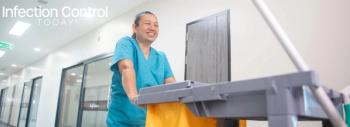
Assess Prior Antibiotic Exposure When Selecting Empirical Therapy for Hospital-Onset UTIs
A retrospective cohort study by
The most commonly isolated pathogens from 5574 unique UTI episodes (2027 with and 3547 without prior antibiotic exposure) were E. coli (49.5%), K. pneumoniae (17.1%), and P. aeruginosa (8.2%). P. aeruginosa was significantly more commonly isolated in patients with ≥2 prior antibiotic exposures (12.6%) compared with no exposure (8.2%; p = 0.036) or 1 prior exposure (7.9%; p = 0.025). Two or more prior antibiotic exposures were associated with slightly higher incidences of fluoroquinolone nonsusceptibility, multidrug resistance, and extended-spectrum β-lactamase phenotype compared with 0 or 1 exposure, suggesting an increased risk for resistant Gram-negative pathogens among hospital patients with urinary tract infections occurring ≥3 days after admission.
The researchers concluded that clinicians should critically assess prior antibiotic exposure when selecting empirical therapy for patients with hospital-onset urinary tract infections caused by Gram-negative pathogens.
Reference: Bidell MR, et al. Effect of prior receipt of antibiotics on the pathogen distribution and antibiotic resistance profile of key Gram-negative pathogens among patients with hospital-onset urinary tract infections. BMC Infectious Diseases. 2017;17:176
Newsletter
Stay prepared and protected with Infection Control Today's newsletter, delivering essential updates, best practices, and expert insights for infection preventionists.






